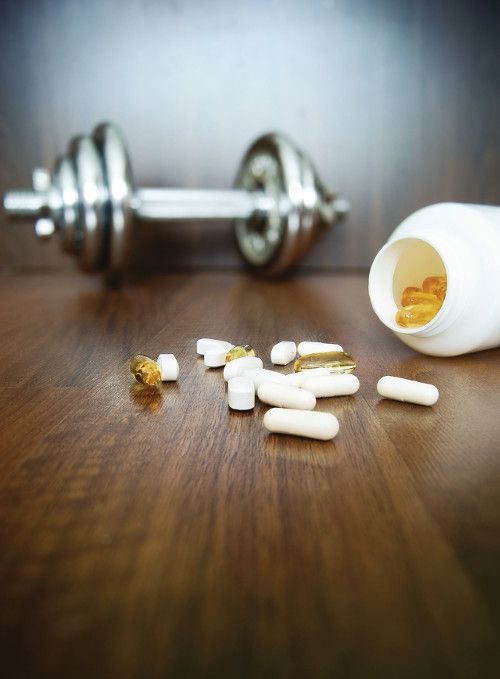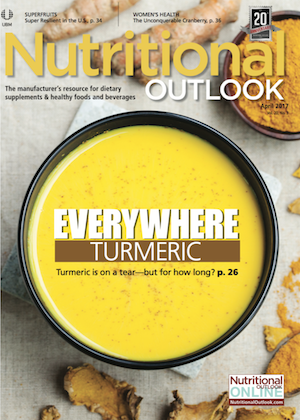2017 Sports Nutrition Adulteration Update
Experts discuss emerging adulterants, strategies for catching adulteration, and whether the Designer Anabolic Steroid Control Act has made a difference.
Photo © Shutterstock.com/Harsanyi Andras

Adulterated products masked as dietary supplements continue to be a concern for professional athletes and weekend warriors alike. Nutritional Outlook caught up with two experts on the topic of adulterated sports supplements.
John Travis is a senior scientist at NSF International (Ann Arbor, MI). Travis has more than 20 years of experience as an analytical chemist specializing in the analysis of dietary supplements. As senior research scientist at global public health organization NSF International, Travis analyzes hundreds of dietary supplement products each year for various contaminants, emerging drugs, and harmful compounds. He has written articles for Nutritional Outlook on emerging adulterants in sports supplements and the tools used to detect them.
Amy Eichner, PhD, is a special advisor, drug reference and supplements, for the U.S. Anti-Doping Agency (USADA; Colorado Springs, CO). Eichner has worked with USADA in its Drug Reference Department since 2009 on initiatives such as USADA’s Drug Reference Hotline, the Global Drug Reference Online database, USADA’s Therapeutic Use Exemptions, and Supplement411.org.
Overall, how has the problem of sports-supplement adulteration improved since the passage of the Designer Anabolic Steroid Control Act of 2014 (DASCA)? What are some of the biggest problem areas that remain?
John Travis: NSF International has seen improvement in the issue of adulterated sport supplements since the passage of DASCA, which has definitely had a huge impact on this problem. Before DASCA, supplements containing steroids either directly by name or hidden on the label masquerading as another ingredient were marketed through blogs and forums. This type of distribution has pretty much disappeared. While there are still some companies out there selling steroids masquerading as supplements, many of the companies engaged in that practice have exited the marketplace. Hopefully, we do not witness a re-emergence.
Amy Eichner: The 2014 amendment to the Controlled Substances Act specifically named many anabolic agents that are considered “controlled,” which provided much needed clarity to enforcement agencies and manufacturers. Since then, we’ve seen a movement toward the sale of selective androgen receptor modulators (SARMs) and other experimental drugs, including Enobosarm, various peptide hormones, and other metabolic agents, that are not specifically named in any regulation. While USADA is not aware of any basis upon which companies can claim such substances are dietary ingredients, this doesn’t stop companies from advertising them as such. Consequently, athletes continue to be exposed to and test positive from illegal ingredients that can be dangerous and are prohibited in sport.
What are some of the most concerning adulterants now appearing in products marketed as dietary supplements for athletes? Why do you find these ingredients to be so troubling?
Eichner: Of greatest concern are the experimental drugs currently undergoing clinical trials, such as Enobosarm (also known as ostarine), ibutamoren, and others. These substances are investigational new drugs that act on the hormone systems in the body and have nothing to do with nutrition. The FDA has clarified that such products are not legitimate dietary ingredients, but they continue to pop up in dietary supplements. Such ingredients in products marketed as dietary supplements pose a serious threat to athletes and all consumers.
Other ingredients that we see a lot and are concerned about include higenamine, methylsynephrine (oxilofrine), B-methylphenethylamine, and dimethylbutylamine (DMBA). We still even see methylhexaneamine (DMAA) included in products, even though the FDA clarified years ago that methylhexaneamine does not meet the definition of a dietary ingredient.
Travis: There are a set of concerning ingredients that are appearing in products which produce effects similar to the anabolic steroid products that we have seen in the past. Manufacturers of these products are targeting athletes and image-conscious people. The ingredients SARMs and GHRPs (growth hormone releasing peptides) have become more popular after the passage of DASCA.
SARMs and GHRPs are actually pharmaceuticals masquerading as supplements. Both SARMs and GHRPs have been on the World Anti-Doping Agency (WADA) prohibited list for some time. Researchers are investigating the clinical use of SARMs in hospitals for patients who lose muscle mass due to bed confinement for extended periods and the use of GHRPs in children with growth hormone deficiency. SARMs target the androgen receptor similar to anabolic steroids, while GHRPs target the ghrelin receptor, causing the cascade of events which stimulates the body to release more growth hormone. They have different, perhaps complementary, mechanisms of action within the body.
These are not legal dietary supplement ingredients. We are concerned that the side effects of supplements containing SARMs and GHRPs are unknown and that their use in healthy individuals has not been clinically investigated. During the clinical trial phase of many pharmaceuticals, the drug has been discontinued due to unacceptable side effects. It would be unfortunate to have an outbreak of serious adverse side effects due to the use of SARMs and GHRPs in dietary supplements.
As many problematic adulterants masquerade under false names on product labels, what are the best strategies to test for these substances?
Travis: Research conducted by NSF International has shown that some supplements in the market can contain harmful ingredients and contaminants, and they are not always listed on the label. Some of these harmful ingredients have actually not been proven safe for human consumption. In addition to the GHRPs and SARMs, our studies (with other researchers) have found that new stimulant drugs continue to appear on labels as botanical names, such as “geranium oil” for DMAA, “dendrobium extract” for DEPEA (N,alpha-diethylphenylethylamine), “Pouchong tea extract” for DMBA, and now “Acacia rigidula” as BMPEA (beta-methlyphenylethylamine). This gives people the false impression that the ingredient is derived from plants. This is fraud, plain and simple; these are all manmade chemicals. NSF International uses state-of-the-art analytical instrumentation and highly skilled analytical chemists to test for these substances in supplements. It is not a trivial task.
This is why NSF International developed a product certification program which tests dietary supplements to confirm what’s on the label is in the product and that the contents are not harmful to the consumer. Consumers should look for certified products that have been tested to ensure that there are no harmful contaminants or pharmaceuticals such as DMAA, DEPEA, DMBA, BMPEA, SARMs, and GHRPs that can harm people’s health.
Eichner: We all know that you can’t test quality into a product and that quality (including freedom from adulterants) must be designed into a product from day one. Supplement manufacturers are hopefully extremely careful about the raw ingredients they accept, and they should stay tuned to Supplement411.org and Prohibited List changes to stay updated on ingredients that are prohibited in sport. Chances are if an ingredient is prohibited in sport, it has dubious nutritional benefits and probably does not belong in a supplement to being with.
What new steps do you think government regulators need to take to further prevent adulteration of supplement products for athletes?
Eichner: USADA continues to advocate for stronger regulations, as the current regulations do little to dissuade companies from manufacturing with ingredients that are illegal or downright dangerous. At this point, USADA is encouraging regulators to more effectively prevent the manufacturing or importation of investigational drugs.
Travis: I don’t think we will see an increase in government regulations, but we are seeing the dietary supplement industry becoming less concerned about calling out bad supplement manufacturers. This action creates more separation between the good and bad players in the industry. The shift is good for the industry, as they are taking responsibility for ensuring the supplements they produce are safer through certification. The NFL, NHL, MLB, PGA, LPGA, Canadian Center for Ethics in Sport (CCES), and the New York City Police Department all require the use of NSF Certified for Sport dietary supplements, which can be accessed through the NSF Certified for Sport app. This app lists all certified dietary supplements for products that have been tested on a lot-by-lot basis and are free of prohibited substances such as steroids, pharmaceuticals, as well as over 265 athletic banned substances from the WADA, NSF Annex B, NFL, and MLB prohibited-substance lists.
Also read:
Dietary Supplements: New Testing Tools to Catch Botanical Adulteration
Which Are Emerging Adulterants in Sports Supplements?
Stimulant Adulterant Still in Supplements for Weight Loss, Sports Performance, According to Study

Prinova acquires Aplinova to further increase its footprint in Latin America
April 7th 2025Prinova has recently announced the acquisition of Brazilian ingredients distributor Aplinova, which is a provider of specialty ingredients for a range of market segments that include food, beverage, supplements, and personal care.

























